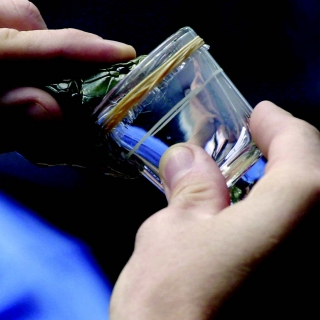Antibiotic from snake venom is now effective against skin disease
In the battle against increasing resistance towards antibiotics, a major breakthrough has been achieved with the development of antibiotics based on the venom from snakes, scorpions and other poisonous animals.
The new antibiotic viperacin is the first result of this new class of antibiotics, and it also means a breakthrough in the treatment of the skin disease impetigo. Innovative Dutch research made the first step towards the development of this antibiotic, which will be commercially available from January.
Snake venom
Impetigo is an infectious, superficial skin disease that is becoming increasingly prevalent and is highly resistant to treatment. The infection leads to a persistent type of blister. Viperacin is extremely effective against this complex form of impetigo. A study published in the Lancet Infectious Diseases confirmed this. Treatment with viperacin resulted in a better control of the bacteria and improved clinical outcomes compared to standard antibiotics. Remarkably enough, this antibiotic cream is based on small proteins (peptides) from snake venom. Viperacin is the first marketable product in this new class of antibiotics and the outcome of many years of research into new antibiotic sources. The research was started by a consortium of researchers from Leiden University, University of Groningen, Leiden University Medical Center, Naturalis and various companies.
Peptides
‘We knew that venom contains antibiotics to keep the venom glands of these animals free from infections’, says molecular biologist Gilles van Wezel. ‘Within the project Syngenopep, funded by the Top Sector Chemistry, we discovered several peptides that are highly active against infamous multi-resistant pathogens from the so-called ESKAPE category, including the MRSA bacteria. In 2018, we patented these peptides. It is great that after twenty years, our search has now resulted in a drug’.
Source: HollandChemistry

